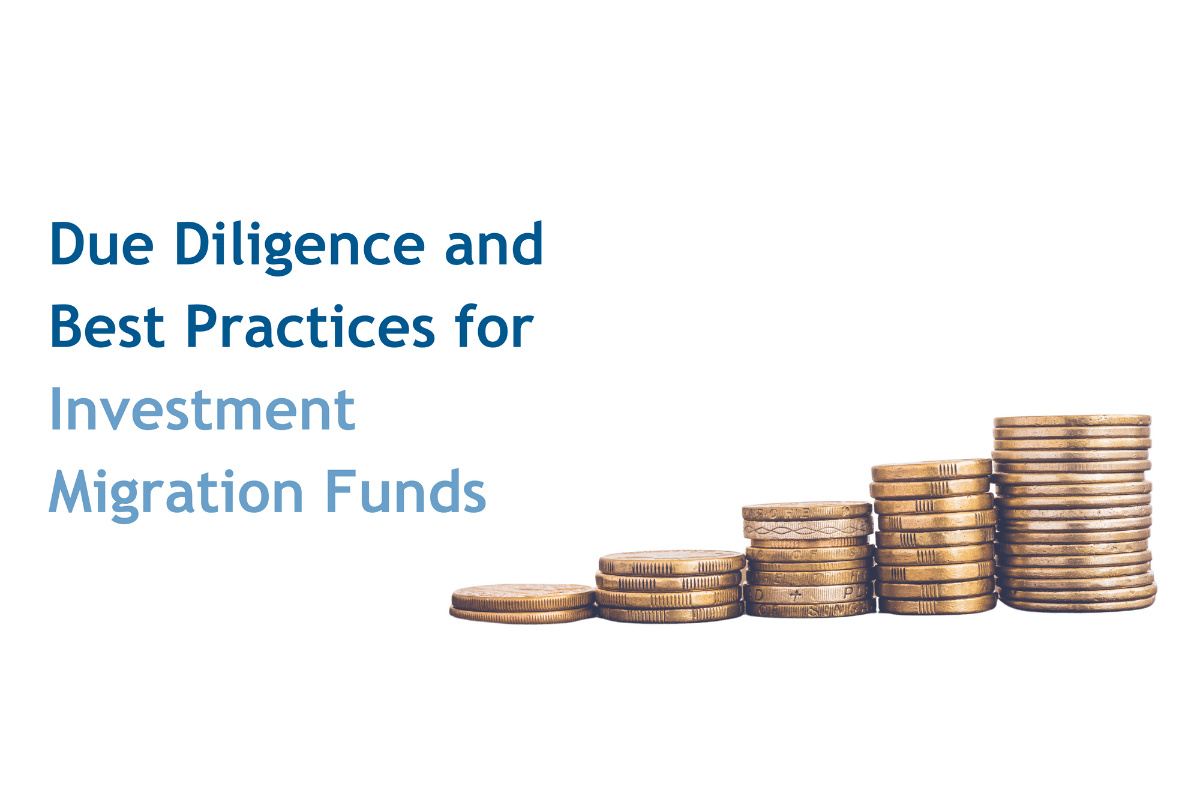Due Diligence and Best Practices for Investment Migration Funds


An article written by Steven Pepa, Managing Director of Saratoga Capital Partners for the IM Yearbook 2021/2022
As migration funds are gaining in popularity, Steven Pepa of Saratoga Capital explains what to do and what to avoid when choosing this investment route.
The investment migration industry has traditionally been about lifestyle choices. Investors obtain their second citizenship or permanent residency solution usually after purchasing a compliant real estate, or to a lesser extent making a governmental donation.
Professionals have been overwhelmingly focused on real property transactions, and the ‘sale’ so to speak is about which real estate is better than the next.
Over the last few years, however, investment migration candidates, as a group, have started to diversify in terms of their focus. The real estate option is still the preferred choice but increasingly migration funds are being seen as a viable and highly desirable alternative.
As a result of this newfound demand, migration funds are now possible in several countries: Bulgaria, Greece, Portugal and Turkey.
How did we get here?
This shift is due to a number of reasons. First, as migration funds are financial products, they are a useful vertical to international tax planning and wealth preservation. This fact makes funds much more desirable to a certain class of investors who do not require, nor are they interested in, a lifestyle choice such as a
vacation home. The migration solution is being seen through the lens of financial planning.
Second, regulatory frameworks have evolved in the jurisdictions that offer investment migration solutions, thus making the incorporation of migration funds with proper governance a possibility. Over the last five years, we have seen a greater sophistication on the part of many regulators who are quite adamant of developing their respective fund industries as viable alternatives to traditional fund jurisdictions. There is greater competition amongst jurisdictions and funds are being seen as an attractive form of FDI independent to, and in tandem with, investment migration.
Third, governments are starting to realise that migration funds can be a consistent source of FDI that can help a country create greater economic diversification outside of the real estate / construction sector. This also helps countries limit the negative externality of real estate demand and the resulting bubble.
Finally, with destabilisation occurring around the globe (and especially across the West), there is a greater pool of candidates out there these days, many of whom are younger professionals that understand and want financial products. In short, industry demand is changing.
How to choose a migration fund.
Like any investment product, a migration fund is fraught with potential pitfalls. Each fund is different and is not necessarily suitable for all investors. It is important for investors and their advisers to conduct their own due diligence on a prospective fund, much like the diligence of private investment structures. Due diligence should focus on gaining a clear sense of a migration fund’s investment objectives and risks, management, fees and redemption options.
Start with corporate governance.
Once the investor has decided that a migration fund option is preferable over a compliant real estate transaction – and has also determined which migration programme is best from a personal perspective – the analysis should start with corporate governance. Good corporate governance is key. A fund, after all, is a financial product.
A migration fund that has the right internal protocols governing itself, its manager and related parties – all of which should be designed to protect investors and enhance returns – will do much better than a fund that does not have such protocols. The level of governance should be above that of the regulatory minimum.
Things to look for include:
• How are the boards of these key entities constituted?
• Are they full of related parties or family members?
• What are the professional qualifications of the people running the fund?
Although migration funds are not publicly listed (at least not yet in the industry) and are nothing more than private placements for investor capital in return for a migration solution, the closer a fund, its manager and related parties mimic public levels of good corporate governance the better.
Always look at the investment objectives and risk.
Even with good corporate governance, however, a particular fund may not be suitable. One needs to carefully analyse a fund’s investment objectives and risks, management, fees and redemption options.
There are several questions to ask to get a good sense of risk and return:
• What is a fund’s long-term investment objective? How does it get there?
• Is it focused on income, growth or a combination of the two?
• How does the manager expect the fund to perform in various market environments?
• What are the primary risks that this fund is exposed to, and how are they managed within the fund?
It is important to understand the risk and return profile of a fund before deciding whether investment objectives sufficiently align.
Is there diversification?
Closely associated with investment objectives and risk is diversification.
Some migration funds, for example, are focused on a single asset such as a real estate construction. The fund is nothing more than a financial product placed over an existing real estate project by a developer or promoter.
Other migration funds have a more diverse approach, spanning different asset classes and/or geographic.
It is important to know the diversification strategy of the migration fund and how the manager uses it to lower risk and create more favourable returns. Most important, does the team behind the fund know how to rollout the diversification strategy? Do they actually understand what it entails? What is its past experience and performance in this respect?
Fees are always a concern.
Investment migration funds generally have three distinct types of fees: upfront or offering fees; operating fees; and liquidation fees.
Upfront fees include commissions and marketing fees for agents that are sourcing the ultimate clients. How these fees are calculated by a fund, and do investors ultimately pay for them, is a good starting point in any discussion. As well, is the investor required to pay a subscription fee to enter the fund?
Operating fees usually include the manager’s annual fee. Some funds have high manager fees for sourcing opportunities for the fund and its investors. There may be performance based fees based on achieving pre-specified metrics. A high or low manager fee is not the question to ask. Rather, ask for the justification of the fee by the manager and how they add value to the fund and investor return.
Liquidity fees include real estate disposition fees, loan termination fees, or other fees and expenses related to selling or liquidating fund assets. Fees can vary significantly by structure and asset type, so an important factor in reviewing fees is to compare similar funds.
Lockup, liquidity and redemption.
Another key area is the period of the lockup – how much longer than the investment migration regulated minimum does the fund manager ask an investor to hold?
As well, what are the redemption options and how liquid is the fund to meet those obligations? When it comes to redemption, what frequency are redemptions offered? Can an investor exit completely or is it staggered? Are there any hidden fees on redemption – does the investor pay the manager a fee to leave the fund?#
US Persons as investors.
Finally, a few thoughts on Americans as an investor class, as they now seem to be a growing source of investment migration candidates.
Although all countries have investment protection laws that apply to their citizens, the US Securities and Exchange Commission (SEC) is quite a unique animal in that it has the power to ensure extraterritorial application of its investor protection laws, and is quite willing to use it!
Ask the fund manager if the migration fund can and does accept US persons as investors. Remember that a migration fund is a financial product and by its very nature, it is selling securities to US persons on a private placement basis. As such, it must be exempt from registration under US federal securities laws.
The underlying documentation of the migration fund is key, as it ensures that the fund properly falls within the US safe harbour provisions. A migration fund that allows for Americans should normally have a more robust private placement offering memorandum with applicable US securities law references, and the onboarding process itself should be properly documented through the subscription package.
Picking a migration fund with an American in it (or conceivably will be in it) can create issues down the road for that fund, its manager, the other investors, and ultimately the investment migration agents marketing that financial product.
In conclusion.
It is critical that one performs a proper due diligence of a prospective fund’s investment objectives and risks, performance expectations, management, fees and redemption options. As well, if the migration fund is being offered to Americans, additional US securities law analysis is required.
Taking the time out to understand the migration fund, its manager, its risks and strategy, etc. prior to placing an investment is not just prudent but common sense.

